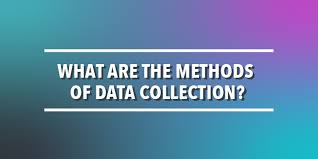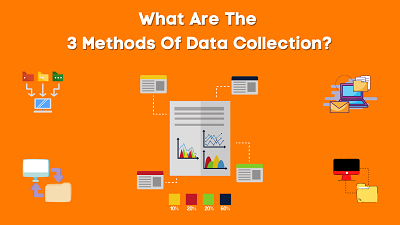Data Collection Methods
Data collection is essential as it gathers crucial information concerning your research topic. It authenticates the issue and supports any claims your study has.
On the other side of the spectrum, data collection in the business sector enables companies to store and analyze information about their leads or existing clients.
Gathering this information helps your company build a database of customers for future marketing and retargeting activities without needing to spend a lot.
What are the Different Data Collection Methods?
Did you know that you don't have to make significant marketing efforts to reach new leads? Effective data collection enables you to focus your time and money on other business endeavors.
There are different data collection methods - from the traditional, in-person to digital. However, the latter is preferable as it removes any potential bias or human error from the data collected.
When Do You Need Data Collection Tools?

It would help to have data collection tools for academic research, a project, or a product launch. When you gather data, these tools allow you to evaluate old and new information about a particular topic. You can use this analysis as a guide when making strategies for the future.
Businesses use data to study and learn about current trends, employees, customers, and competitors, among other things. Meanwhile, organizations can use it to understand and assess policies.
What are the examples of digital data collection tools? You can now use website contact forms, survey forms, checkout/point-of-sale (POS) systems, petitions, event sign-ups, and app installation.
What Information to Collect
For formal studies conducted by professionals or students, the researchers may ask respondents for their basic information and demographics, followed by a series of questions.
A questionnaire can be designed to collect either subjective or qualitative data or objective or quantitative data. To delve deeper, here's how qualitative and quantitative data differ.
Qualitative Data. Questions must be based on behavior, perceptions, and emotions to gather this data. It is usually composed of open-ended questions. Respondents can state their answers based on their beliefs or experiences.
Quantitative Data. Researchers can aggregate this type of data through close-ended questions. For example, they can use multiple-choice questions or a Likert scale. Respondents have to choose from the available options provided.
Meanwhile, businesses collect data based on their needs. For instance, clothing stores must capture insights to market their products effectively. Considering this, they can collect the following details: name, email address, physical address, age, and gender, followed by questions about the product or the business.
Once the data is collected, researchers can analyze it to gain insights or understand trends. They may share the results with your audience as well.
3 Data Collection Methods
1. Surveys
Individuals and organizations collect data through surveys.
Most survey builders offer a vast library of question types you can add to your form. This tool informs you of your audience's preferences, opinions, and feedback on a particular topic or product.
You may also opt for a pre-made survey template provided by form builders if you don't have the time to build one from scratch. You can modify the theme, photos, and logo to reflect your branding.

Online surveys can be easily distributed through several channels, including email, websites, QR codes, and social media.
The survey dashboard can interpret the collected data and run analytics to expose hidden insights. You can even optimize data collection when you integrate it with third-party applications.
2. Polls
Polls often have one or a few multiple-choice questions. It is used to get a quick pulse of the audience's perceptions. Since they are short, getting responses from people can be easy.
Like surveys, polls can be embedded into websites or shared on social media. Respondents can immediately see and compare the results as they are processed in real-time.
3. Questionnaire
A questionnaire is a set of questions people can answer in short-form or long-form. Respondents can fill up the queries based on their knowledge or experience of the topic.
Data Collection Methods Example: FormBot
Are you a researcher conducting a study? Or a business that wants to understand customers' thoughts?
Data collection tools can eliminate possibilities of errors or implement a new idea.
FormBot can help you get started with your data-gathering process. We can help you create online forms, add different question types, and personalize them according to your branding. The possibilities are endless with our tool! Explore our page to check how we can make your data collection easy.
Related Suggestion
Letter of Recommendation Template